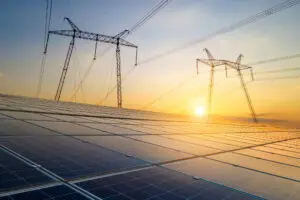 The energy sector in Ontario is in an exciting, yet challenging time, as it looks to respond to the growing need for green and renewable energy, and to update ageing infrastructure. Technological advancements, climate change policies and growing consumer opportunities are leading to an increase in Distributed Energy Resources (DER) across North America, including Ontario –which is leading to a more decentralized system.
The energy sector in Ontario is in an exciting, yet challenging time, as it looks to respond to the growing need for green and renewable energy, and to update ageing infrastructure. Technological advancements, climate change policies and growing consumer opportunities are leading to an increase in Distributed Energy Resources (DER) across North America, including Ontario –which is leading to a more decentralized system.
IESO is at the forefront of the changing energy sector, having put forth its Enabling Resources Program which will produce an integrated plan of activities to be undertaken by the IESO to enable existing electricity resources and through the development of a DER Roadmap to provide clarity on IESO objectives, initiatives, and timing for DER integration. Notably, through the work conducted by the IESO to date consumer preferences have been identified as a prominent driver of DER adoption.
To help inform its priorities with regards to the integration of emerging resources into the IESO-controlled grid and prepare for changing consumer demands, the IESO retained Ipsos to conduct a survey about preferences and behaviours that are likely to impact the supply and demand of electricity in Ontario in the future. The survey was conducted among Residential, Small business, Commercial and Industrial consumers.
The objectives of the survey were to:
- Understand what is most important to consumers about electricity service (e.g. cost, reliability, control, sustainability, etc.), how they rank these preferences and assess the trade-offs between these preferences;
- Assess what new electricity products and services consumers want from their electricity providers –if any –and how much they are willing to pay for these;
- Capture the extent to which consumers are willing to experiment/adopt alternative supply arrangements/providers (e.g. an entity other than an LDC) as well as what would influence them to choose an alternative supplier;
- Assess to what degree consumers are willing to adopt more dynamic electricity prices, and further explore price issues (e.g., choice, simplicity, barriers to changing demand at different times);
- Determine what DER technologies consumers have already installed, and how likely they are to adopt a variety of DER technologies;
- Assess the drivers and barriers to adopting different DER technologies; and
- Measure the likelihood consumers will supply some, or all, of their own electricity, and assess influences driving the decision to either produce their own electricity or stay connected to the grid;
- Ontario Energy Board (OEB) contribution to the development of research objectives, surveys and focus group sessions.
Read the full Consumer Electricity Preferences and Behaviours Survey
Leave a Reply